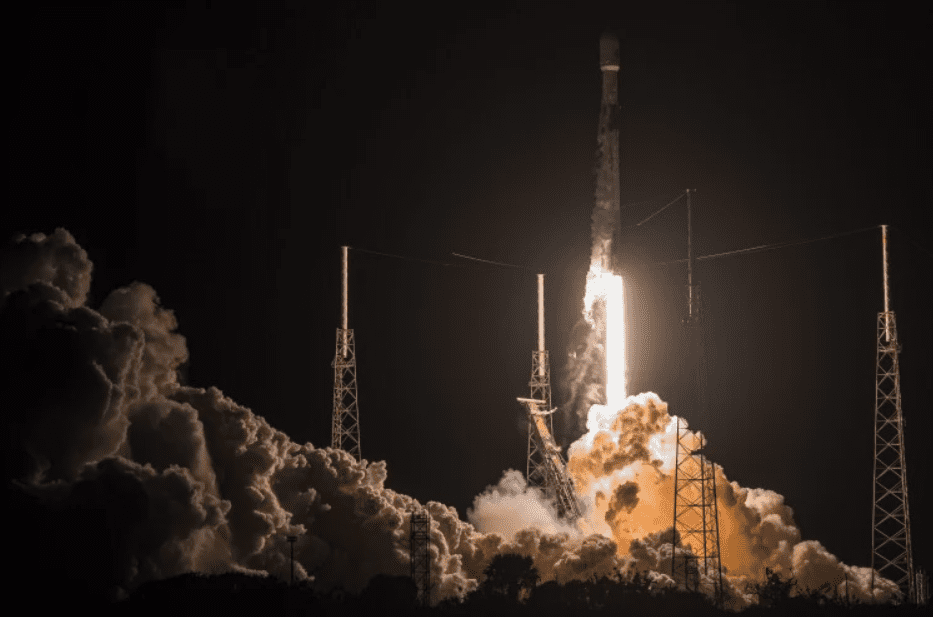
SpaceX launches the I-6 F2 satellite for Inmarsat on Feb. 17 (Photo: SpaceX/Inmarsat)
Inmarsat’s second I-6 satellite, I-6 F2, is on its way to orbit after a SpaceX launch from Florida on February 17. Inmarsat confirmed post-launch the operator is communicating with the satellite.
SpaceX launched the Airbus-built satellite from the Cape Canaveral Space Force Station on a Falcon 9 rocket on Friday evening. The satellite will now spend several months traveling to Geostationary Orbit before it is scheduled to enter service in 2024.
This is the second Inmarsat-6 satellite, part of Inmarsat’s upgrade to its Orchestra network. Mitsubishi Heavy Industries launched its twin satellite, I-6 F1, in December 2021, which is scheduled to enter service soon.
Airbus built the satellite based on its Eurostar E3000 spacecraft. With a launch mass of 5.5 tons, it is a dual-payload satellite, with a large 9 meter aperture L-band antenna and six multi-beam Ka-band antennas. It also has a modular digital processor to provide full routing flexibility over up to 8000 channels and dynamic power allocation to over 200 spot beams in L-band.
“I want to extend my profound thanks and appreciation to our dedicated employees and partners who have made this launch a reality. Our I-6 program has been six years in the making. Last night’s launch marked another milestone as we revolutionize global communications at scale,” Inmarsat CEO Rajeev Suri said. “Of course, this is not the end. Along with the I-6s, we will add five more advanced spacecraft to our fleet by 2025 as part of our fully funded technology roadmap. That will allow us to continue to meet our customers’ needs into the 2030s and beyond.”
Inmarsat is in the midst of a deal to be acquired by Viasat. The deal is still going through regulatory approval, and the European Commission (EC) recently opened an in-depth investigation into the merger, citing concern it will hurt competition in the in-flight connectivity market.
This article was originally published by Via Satellite, a sister publication to Avionics International. Click here to read the original version >>